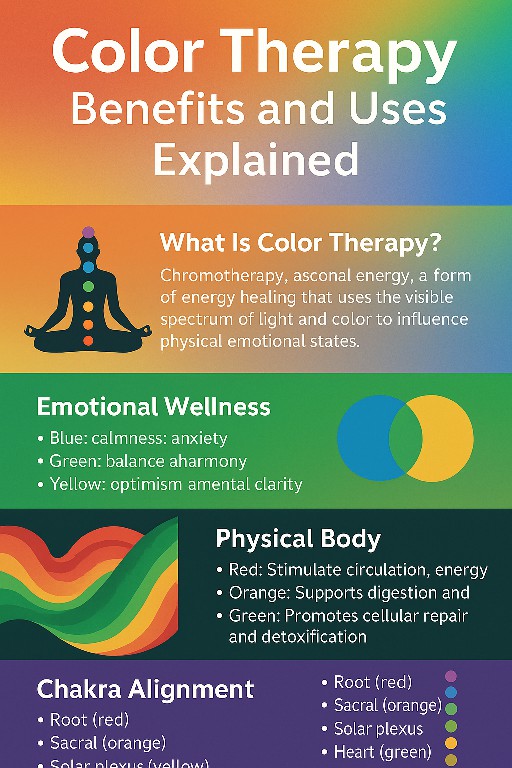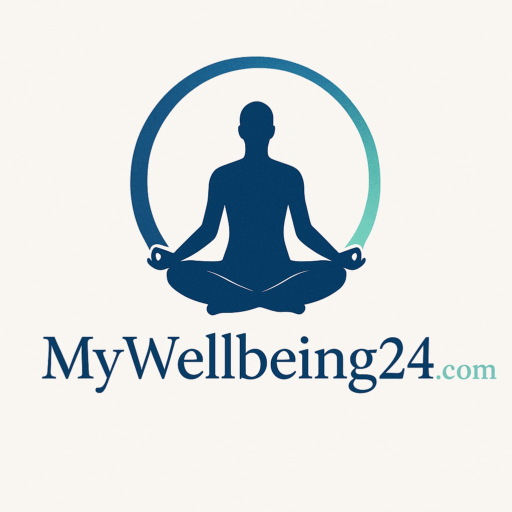Color Therapy Benefits and Uses Explained
In recent years, color therapy benefits and uses have gained popularity as more people seek natural ways to improve their physical and emotional well-being. Also known as chromotherapy, this alternative healing practice is based on the idea that different colors can influence mood, energy, and even physiological functions. While color therapy is not a substitute for medical treatment, many find it a valuable complementary approach. In this article, we’ll explore how chromotherapy works, its many advantages, and how you can integrate it into your daily life.

What Is Color Therapy and How Does It Work?
Color therapy, also known as chromotherapy, is a form of energy healing that uses the visible spectrum of light and color to influence our physical and emotional states. Each color carries a unique frequency and vibrational energy that corresponds to different aspects of our body and mind. For instance, red may increase vitality, while blue might promote calmness and relaxation.
Color Therapy Benefits and Uses in Emotional Wellness
Among the most widely recognized color therapy benefits and uses is its ability to support emotional health. Different colors stimulate the brain in distinct ways:
- Blue is associated with calmness, making it excellent for reducing anxiety.
- Green creates a sense of balance and harmony.
- Yellow encourages optimism and mental clarity.
Furthermore, surrounding yourself with the right colors through clothing, decor, and lighting can help create an emotionally supportive environment.
Color Therapy Benefits and Uses for the Physical Body
Another compelling area of color therapy benefits and uses is physical well-being. While still under scientific investigation, practitioners believe certain colors help with:
- Red – Stimulates circulation and can increase energy levels.
- Orange – Supports digestion and boosts immunity.
- Green – Promotes cellular repair and detoxification.
Because of this, chromotherapy is often used in holistic settings to support the body’s natural healing processes.
Integrating Color Therapy Into Daily Life
One of the best aspects of this practice is how easily it can be brought into your everyday routine. Here are some simple methods:
- Wardrobe choices: Dress in colors that align with your emotional needs.
- Interior design: Decorate your spaces with hues that promote your desired mood.
- Color meditation: Visualize specific colors while meditating for targeted emotional or physical outcomes.
- Lighting tools: Use colored LED lights to create a personalized environment.
Even small adjustments in your color exposure can result in noticeable changes in energy and mood.
Chakra Alignment and Color Therapy Benefits and Uses
Chakra healing is a popular application of color therapy benefits and uses. The seven main chakras in the body are believed to correspond to specific colors:
- Root (Red) – Grounding and survival.
- Sacral (Orange) – Creativity and sensuality.
- Solar Plexus (Yellow) – Confidence and power.
- Heart (Green) – Love and emotional healing.
- Throat (Blue) – Communication and expression.
- Third Eye (Indigo) – Intuition and wisdom.
- Crown (Violet) – Spiritual awareness.
By targeting the associated color for each chakra, practitioners aim to balance and unblock stagnant energy.
Scientific Perspectives on Color Therapy
Although more research is needed, some studies support the potential of chromotherapy. For example:
- Psychologists have found that color impacts mood and behavior.
- Health facilities often use soothing colors to reduce stress and aid recovery.
- Retail and marketing industries apply color psychology to influence customer responses.
Thus, while it may not yet be fully embraced by mainstream medicine, its psychological and environmental effects are gaining scientific credibility.
Potential Risks and Limitations
While color therapy has many potential benefits, it is not without its limitations. It should never replace traditional medical care for serious illnesses. Additionally, sensitivity to certain colors may vary among individuals. For instance, excessive exposure to red can cause agitation or restlessness in some people. Therefore, it’s essential to apply chromotherapy mindfully and, when possible, under the guidance of an experienced practitioner.
How to Start Using Color Therapy Benefits and Uses
If you’re interested in experiencing the color therapy benefits and uses yourself, here’s how you can begin:
- Determine your intention – Are you trying to reduce stress, increase energy, or improve focus?
- Pick the right color – Match the appropriate hue with your specific emotional or physical needs.
- Apply the method – Use colored lights, fabrics, or visualization techniques.
- Observe and adjust – Track how you feel and adjust the intensity or duration as needed.
Even a few minutes a day can help create long-term improvements in mood and vitality.
Color Therapy Benefits and Uses in Holistic Practices
Many holistic approaches now integrate color therapy benefits and uses with other techniques such as:
- Reiki – Using colors to enhance energy flow during healing sessions.
- Massage therapy – Incorporating chromotherapy lights for added relaxation.
- Aromatherapy – Pairing essential oils with color cues for emotional balancing.
This combination makes chromotherapy a flexible tool in personalized wellness routines.
Final Thoughts on Color Therapy
To sum up, chromotherapy offers a wide range of advantages for those looking to improve their health naturally. Whether you’re aiming to calm your mind, energize your body, or find spiritual alignment, color therapy provides a safe and accessible method. It may not replace modern medicine, but it can certainly support it in a complementary and colorful way.
You might also be interested in:
